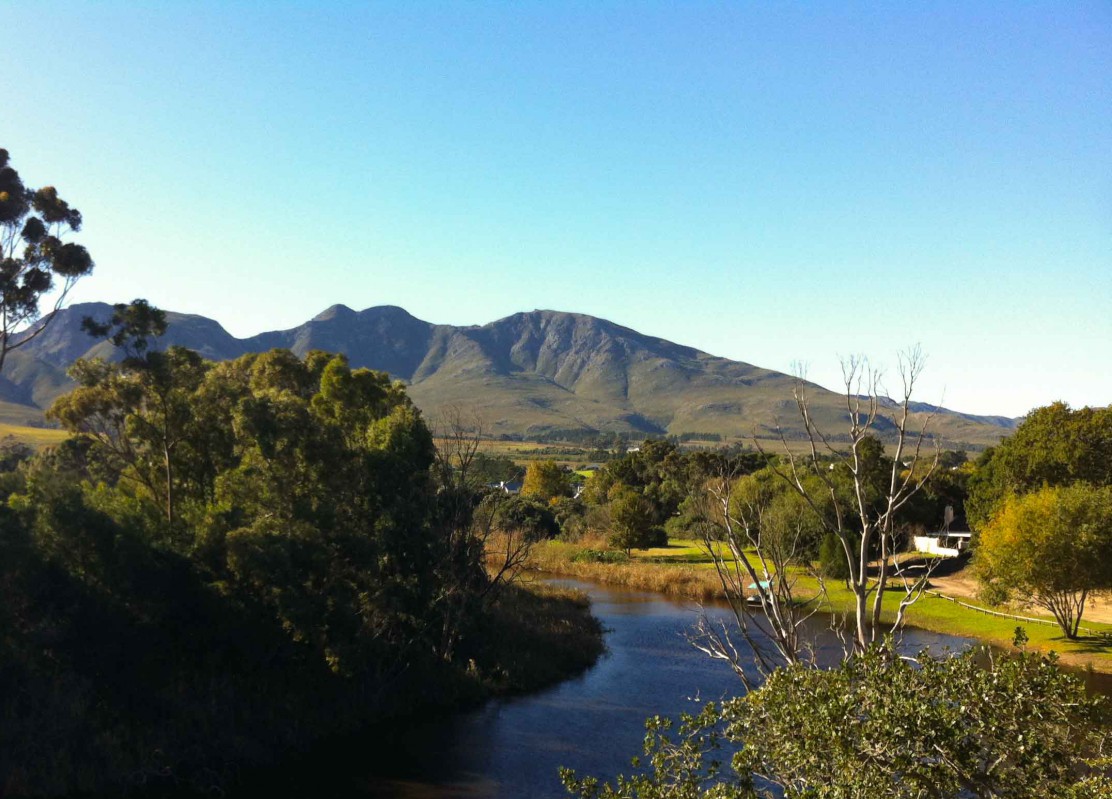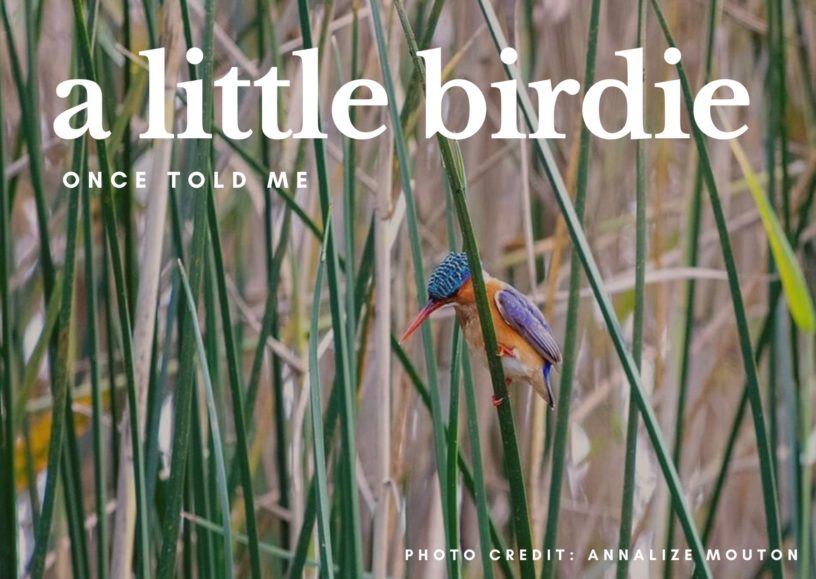A little birdie once told me …
A walking tour around Stanford Village will reveal a wide variety of bird habitats right on its doorstep, offering those with a sense of curiosity in nature, a diverse and rewarding birding experience. Prime areas within the village confines are the Willem Appel Dam and the Wandelpad meandering along Stanford’s water courses.
Outlying areas include the Wortelgat Road, the Klein River Bird Sanctuary and the Akkedisberg Pass. The Willem Appel Dam Hide, right in the village centre, is best visited just after sunrise. Sighting specialities include Little Bittern, African Purple Swamphen, Black Crake, Malachite Kingfisher, Levaillant’s Cisticola and White-backed, African Black and White-faced ducks. The reed beds are a good place to look for Little Rush and Lesser Swamp Warbler, whilst Reed Cormorant roost in the dead trees. The picnic site under the Milkwoods on the opposite bank of the dam is a good spot to find forest species such as the elusive Knysna Woodpecker, Cape Batis, Southern Boubou, Fiscal and Paradise Flycatcher and Bar-throated Apalis. The area along the Mill Stream and Vlei Rd can reward the patient birder with Buffspotted Flufftail, its distinctive call drawing attention to its presence. The Willem Appel Dam has a floating island loved by birds. There are many opportunities for taking excellent photographs from the cover of the Bird Hide (keys available from the Stanford Tourism Office).
A further stroll along the Wandelpad provides excellent birding through a small Milkwood forest to the Klein River and along the river path. A variety of Weavers can be found in the reed beds. Sombre Greenbul is heard in the Milkwoods, along with Olive Woodpecker. Grey and Black-headed Herons roost in the blue gums and in summer the Paradise Flycatchers nest in the poplars.
Overhead, a wonderful variety of Swallows, Swifts and Martins hawk for food and raptors are numerous. These include African Harrier-hawk, Peregrine Falcon, Jackal and Common Buzzard, Yellow-billed Kite and the ubiquitous African Fish Eagle — all can be found along the open stretch on the Wandelpad. A boat trip down the Klein River is a typical must for spotting a host of riverine species and the occasional special such as Honey Buzzard. Cape Siskin, a shy and elusive fynbos endemic, can usually be found in the Casuarina (Beefwood) avenue along the old Akkedisberg Road up to Stanford Hills Estate. If one continues along this road (in a high clearance vehicle) there are a number of fynbos species to be found; Orange-breasted Sunbird, Protea Seed-eater, Cape Sugarbird, Karoo Prinia and Cape Bunting are but a few. Wood Owl have been known to breed in the poplar thickets near the Klein River Cheese Factory. The surrounding farmlands are well stocked with Blue Crane and Denham’s Bustard and the endangered Black Harrier can usually be found quartering low-lying fynbos.
There are also a wide variety of day walking hikes available just outside the village from Phillipskop Mountain Reserve, Stanford Hills Estate and also from Vaalvlei Farm Estate which make for excellent bird watching. The Klein River Mountains and Akkedisberg Pass (on the R326) which follow the route of the river are home to many birds, and the farms along the Papiesvlei Road embrace outdoor life and nature. When the pristine fynbos is in flower late winter, the birdlife and insects, along with other natural wild inhabitants such as caracul, riverine hare, klipspringer, common duiker, cape bushbuck, honey badger, porcupine, wild cat, bat eared fox, cape fur fox and even the elusive leopard (if you’re one of the lucky ones) is a sight to behold.
For guided tours, access to the Willem Appel Hide and Klein River boat trips for you future visits, contact the Stanford Tourism Office Tel: 028 341 0340, email: ask@stanfordinfo.co.za, website: www.stanfordtourism.co.za.

